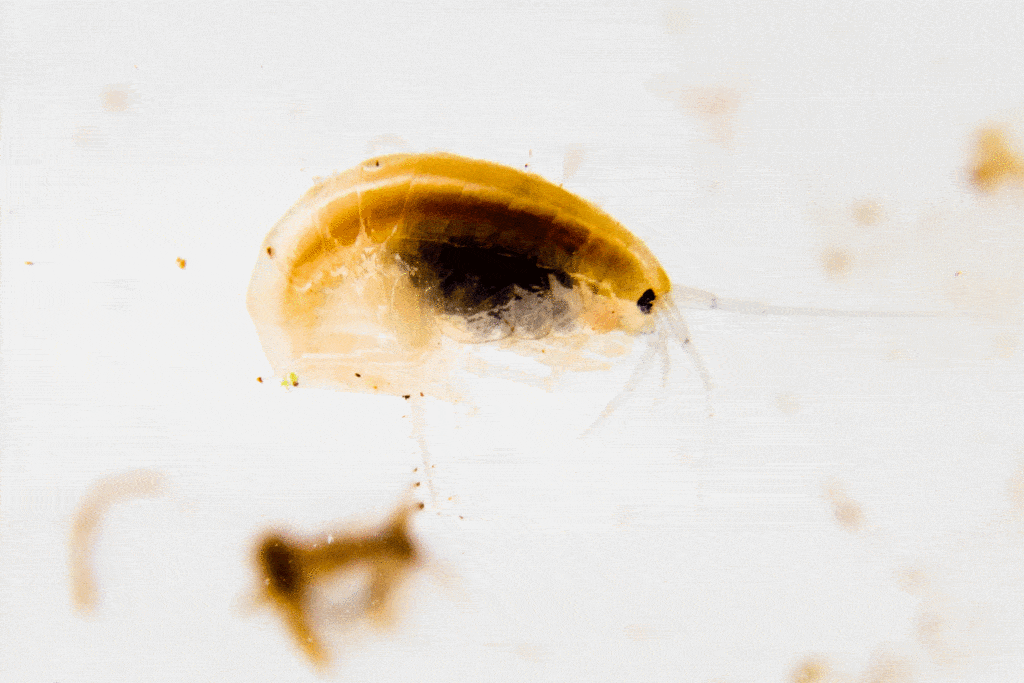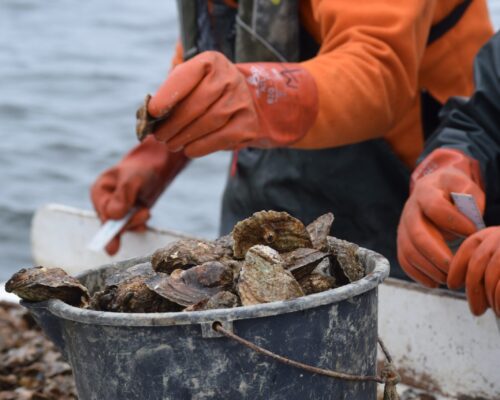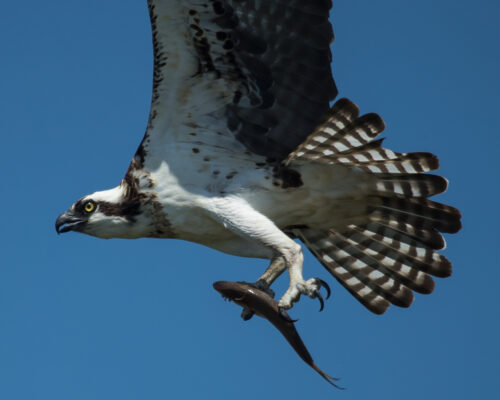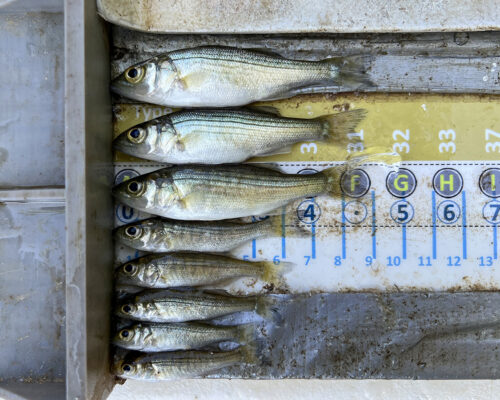Tiny amphipods are a critical link in the food web.
Top Photo: An amphipod collected from Bennett Creek near the Monocacy River in Frederick County, Md.
Run a fine-meshed net through an eelgrass bed and shake the bundle of grass you catch onto a board. Tiny, shrimplike crustaceans will fall out by the dozens, including some mating couples, with the male cradling the female. Most are just large enough to see with the naked eye and pick up with fingers; say, a quarter- to half-inch long.
If it sounds like this column is getting into the weeds, well, yes, it is—literally. That’s the way the Chesapeake works. Plant material, derived from sunlight, is the base energy source for everything we care about, including these tiny amphipods. “Scavenger” is a term that carries negative connotations, so maybe a better word for amphipods is “opportunist.” These creatures make good use of discarded material and in the process turn themselves into something that some other critters want to eat. Call them what you like, these tiny critters are the unsung heroes of the Chesapeake ecosystem.
Six species means there are half a dozen ecological niches for these related but distinct amphipods. An eelgrass bed develops a lot of amphipod food over the course of its growing season, which runs from early spring to now, the onset of fall. Some of it is dead, such as broken-off eelgrass leaves that probably hold algae cells that grew there. The leaves may also hold microscopic live critters, from bacteria and water fleas to copepods, another seriously abundant group of tiny crustaceans. All of this material, alive and dead, comes in a wide range of sizes, especially depending on how wind and waves mechanically break up the plant materials as the season’s weather fronts and storms sweep in from the west.
The different amphipod species have different feeding strategies. Some move around, seeking the most nutritious bits (mostly still alive), while others stay put and feed on whatever comes their way, going through relatively large quantities of material to compensate for the possibility of lower nutrition.
Who thought up such an intricate scheme of existence? Food webs like this develop over millennia as critters learn gradually to take advantage of the array of niches an estuary like the Chesapeake presents.
Amphipods aren’t large enough to interest full-grown predators such as crabs, rockfish, spot, croakers, speckled trout, flounder, or even black drum, red drum, and gray groupers. But what about first-year juvenile fish? Some of the most common amphipods grow to be four to six millimeters (around a quarter-inch), according to a 1971 study by James Feeley and Marvin Wass. A young fish that is 125 millimeters long (five inches) in October will look at those amphipods the way we’d look at a bowl of 21- to 25-count shrimp. So will “forage fish” like silversides, bay anchovies, and killifish that are mature adults at three to five inches. And who eats them? The grown-up fish that anglers love; blue crabs, when they can catch these forage fish; and fish-eating water birds like herons, terns, skimmers, and gulls. Opportunists all. And now you know how food webs transfer sunlight energy up to top-line predators like us.
The Feeley and Wass study went beyond just eelgrass beds at higher salinity levels in the lower York River. It extended fifty miles upstream, to Lester Manor on the Pamunkey, the larger of the York’s two main tributaries. In all but the worst droughts, that water is fresh, though strongly tidal. Do you think they might have found more amphipod species as they moved their studies up that way? Yes, you’re right. Their study enumerated and described 40 species, with—once again—multiple species adapted to specific niches and foods at varying salinities in differing physical conditions of river flow and bottom sediment.
In October, the amount of food available to opportunistic specialists like amphipods in a river system such as the York is huge. Much of it is the biological detritus of summer’s bounty: algae blooms, scraps of marsh grasses that rains have washed out of the marshes, fallen leaves from riverside trees, and anything else along the river that has lived and died. Amphipods will eat some of that detritus now, but as temperatures fall, their metabolisms and activity levels will decrease. The freezing and thawing of winter will continue to erode the material, turning it in to a mostly dormant reservoir of food for the revival of spring’s new crop of amphipods.
Moving upstream brings more players searching out amphipods. Anyone who has ever caught a white perch on a hook baited with grass shrimp can guess what a young perch thinks about amphipods. Same for yellow (ring) perch, various species of bluegill, crappie, largemouth bass, white/channel/blue catfish, carp, and hickory shad. Even the Pamunkey’s Atlantic sturgeon of various ages (the adults are in the river, spawning this month) eat amphipods as they vacuum the river bottom with their suction-tube mouths. Count in the resident and migratory waterfowl for which the Pamunkey’s marshes are famous as well, including mallards, black ducks, and mergansers.
Now extend this story to all of the Chesapeake’s tidal rivers, creeks, and streams. Think several dozen more amphipod species, at least, and individual numbers that that have at least a dozen zeroes in them. That’s literally tons of tiny critters processing even more tons of detritus. The funny thing is that we humans have never recognized any of these tiny Bay building blocks with common names, except maybe the generic term scud. Good thing that neglect doesn’t bother them. They just keep at their business as they have for thousands of years, helping sunlight move up the Chesapeake’s food web, to us and beyond.




